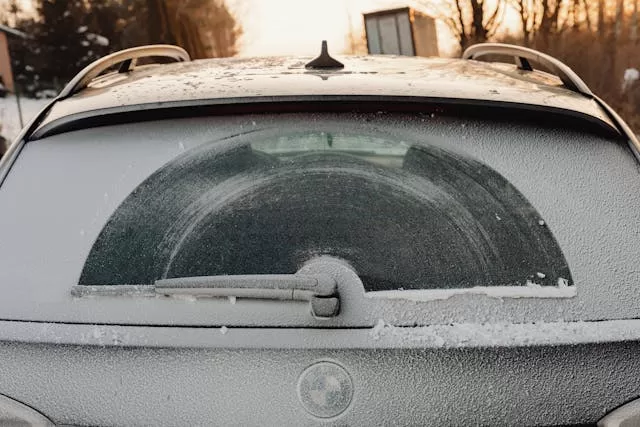
Winter can be harsh on your vehicle, but with proper preparation, you can ensure your car remains reliable and safe throughout the season. Learning how to winterize your vehicle is crucial for handling icy roads and freezing temperatures effectively. Follow these comprehensive steps to keep your car in top shape for winter travel in the USA.
Table of Contents
Why Winterizing Your Vehicle is Important
Winterizing your vehicle is a necessary step to prepare it for extreme cold, snow, and ice. By taking the time to address potential issues, you can avoid breakdowns and ensure your vehicle performs optimally in harsh winter conditions.
Winterizing also enhances safety, protecting you and your passengers from the dangers of winter driving. From maintaining tire traction to ensuring your engine runs smoothly, proper preparation makes all the difference.
Inspect and Replace Tires for Winter
Tires are one of the most critical components of your vehicle during winter. Inspect your tires for wear and ensure they have adequate tread depth. Winter tires or all-season tires with a snow rating are ideal for improved traction on icy roads.
Proper tire pressure is also essential as cold temperatures can cause it to drop. Regularly check and maintain the recommended pressure level for your vehicle.
Check Your Battery Health
Car batteries are more prone to failure in cold weather, so checking your battery’s health is crucial. Test the battery’s voltage and ensure it holds a charge. If your battery is older than three years, consider replacing it before winter arrives.
Clean the battery terminals and ensure they are securely connected to avoid electrical issues. Investing in a portable jump starter can also be a lifesaver during emergencies.
Replace Wiper Blades and Refill Washer Fluid
Clear visibility is essential for safe winter driving. Replace your wiper blades if they show signs of wear and tear. Opt for winter-specific wiper blades designed to handle snow and ice.
Refill your washer fluid with a winter-grade solution that won’t freeze in sub-zero temperatures. Keep an extra bottle of washer fluid in your vehicle for emergencies.
Switch to Winter-Grade Oil and Coolant
Your engine’s performance can be affected by extreme cold. Switching to winter-grade oil ensures proper lubrication and prevents damage to engine components. Check your vehicle’s manual for the recommended oil viscosity for winter.
Similarly, verify that your coolant is at the correct mixture ratio to prevent freezing. A 50/50 mix of antifreeze and water is generally ideal for most vehicles.
Inspect Brakes for Safety
Brakes are vital for maintaining control on slippery roads. Inspect your brake pads, rotors, and fluid levels to ensure they are in good condition. If you notice any unusual noises or reduced braking performance, address the issue promptly.
Having functional brakes is essential for avoiding accidents during winter driving.
Test Your Heating System
A reliable heating system is not just for comfort; it’s also crucial for defrosting windows and maintaining visibility. Test your vehicle’s heater and defroster to ensure they are working correctly.
If you notice weak airflow or inconsistent heating, have your system inspected by a professional mechanic.
Prepare an Emergency Kit
Winter emergencies can happen unexpectedly, so it’s essential to be prepared. Pack an emergency kit with items such as blankets, a flashlight, batteries, a first-aid kit, non-perishable snacks, and water.
Include tools like a snow shovel, ice scraper, and tire chains to handle winter-specific challenges. A fully charged power bank is also useful for keeping your phone operational in emergencies.
Protect Your Vehicle’s Exterior
Winter conditions can damage your vehicle’s paint and undercarriage. Wash your car regularly to remove road salt and grime, which can cause rust.
Apply a layer of wax to your vehicle’s exterior for added protection. Consider using a car cover if your vehicle is parked outside to shield it from snow and ice.
Check Lights for Visibility
Proper lighting is essential for safe driving during shorter winter days. Inspect all exterior and interior lights to ensure they are functioning correctly. Replace any burnt-out bulbs and clean the light covers for maximum brightness.
Consider upgrading to LED or halogen bulbs for improved visibility in low-light conditions.
Test Your Four-Wheel Drive or All-Wheel Drive System
If your vehicle is equipped with four-wheel drive or all-wheel drive, test the system to ensure it engages properly. These systems provide better traction on slippery roads and are invaluable for winter driving.
Consult your vehicle’s manual for instructions on testing and maintaining your drive system.
Use Winter Fuel Additives
Cold temperatures can cause fuel to thicken, reducing engine performance. Using winter fuel additives can prevent fuel line freezing and improve engine efficiency.
Add the recommended amount of fuel additive to your tank during each fill-up to keep your engine running smoothly.
Plan Regular Maintenance Checks
Schedule regular maintenance checks with a trusted mechanic to address potential issues before they become serious problems. Professional inspections can identify hidden faults and ensure your vehicle is ready for winter travel.
These checks should include a thorough inspection of your vehicle’s belts, hoses, and filters.
Stay Informed About Weather Conditions
Staying updated on weather conditions helps you prepare for your journey. Use weather apps and navigation systems with real-time updates to avoid hazardous routes.
Adjust your driving habits to match road conditions, and always prioritize safety over speed.
By following these steps to winterize your vehicle in 2025, you can ensure a safe and stress-free driving experience during the colder months. Proper preparation not only enhances your vehicle’s performance but also keeps you and your loved ones protected from winter’s challenges. For expert advice and additional resources, visit trusted automotive sources.
